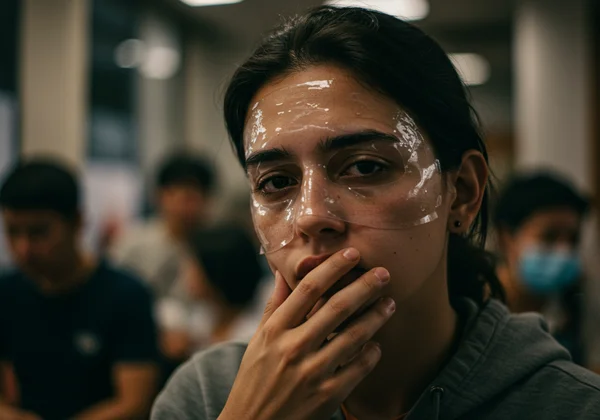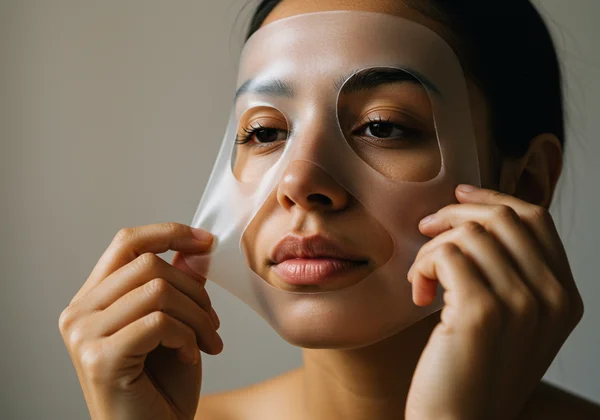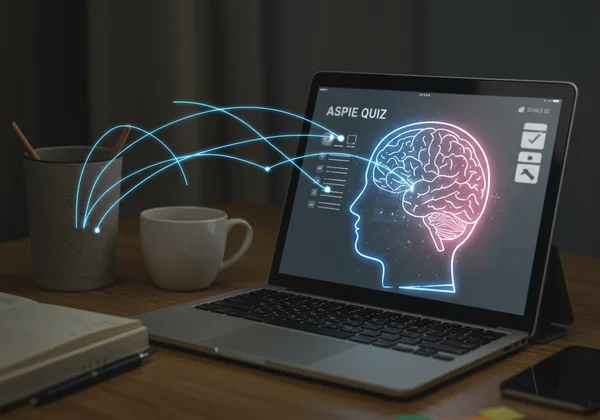Autistic Masking & The Aspie Quiz: Start Your Journey to Unmasking
Feeling constantly tired, like you're putting on a performance just to get through the day? Many neurodivergent individuals experience this profound fatigue, a silent exhaustion that often goes unexplained. This feeling is frequently linked to a phenomenon known as autistic masking or "camouflaging." Do you ever feel like you're playing a character just to fit in? If that question resonates, you're not alone. This article will delve into what masking truly means, why it's so common, and the heavy toll it takes on your well-being. More importantly, we'll explore the first steps towards a more authentic and less exhausting life, starting with understanding your unique traits through a self-discovery tool.
Understanding Autistic Masking & Camouflaging
At its core, autistic masking is the conscious or subconscious suppression of natural autistic traits and the adoption of neurotypical behaviors to navigate social situations. It's an intricate survival strategy developed to gain acceptance, build relationships, and avoid the judgment that can come with being different. This process is often so deeply ingrained that many individuals don't even realize they're doing it until they experience severe burnout. Camouflaging can be a powerful shield, but carrying it every day requires an immense amount of mental and emotional energy.
The "Performance" of Social Interaction
For many, social interaction feels like a complex play where they don't have the script. Masking is the act of improvising that script in real-time. This "performance" involves a range of specific behaviors designed to blend in seamlessly.
- Mimicking Behavior: This includes copying the body language, facial expressions, and speech patterns of neurotypical peers. It's about observing and replicating what is considered "normal" social conduct.
- Forcing Eye Contact: While many autistic individuals find direct eye contact uncomfortable or even painful, masking involves forcing oneself to maintain it to appear engaged and polite.
- Scripting Conversations: This involves mentally rehearsing conversations, preparing questions, and planning responses for various social scenarios to avoid awkward pauses or saying the "wrong" thing.
- Suppressing Stims: Stimming (self-stimulatory behavior) like hand-flapping, rocking, or fidgeting is a natural way for many autistic people to regulate their emotions and sensory input. Masking involves actively holding these behaviors back in public.
Understanding these actions is a key part of self-reflection. If this sounds familiar, a tool like the free aspie quiz can offer insights into the traits you might be working so hard to hide.

Why Neurodivergent Individuals Mask
The reasons behind masking are deeply rooted in the human need for connection and safety. From a young age, many neurodivergent people receive feedback—both direct and indirect—that their natural way of being is incorrect. They may be bullied for their special interests, corrected for their blunt communication style, or ostracized for not picking up on subtle social cues.
This leads to masking for several key reasons:
- Social Acceptance: The primary driver is the desire to fit in, make friends, and be accepted by peers and society at large.
- Avoiding Stigma and Bullying: Masking is a defense mechanism to avoid being singled out, misunderstood, or ridiculed.
- Professional and Academic Success: In workplaces and schools, masking can feel necessary to meet neurotypical expectations of "professionalism" or classroom conduct.
- Personal Safety: In some situations, appearing neurotypical can feel like a matter of safety, preventing misunderstandings that could lead to negative consequences.
The Devastating Impact: Masking & Autism Burnout
While masking can be an effective short-term strategy, the long-term cost is incredibly high. The constant mental calculus of monitoring your every move, suppressing your authentic self, and performing social norms leads directly to a state of profound exhaustion known as autism burnout. This is more than just feeling tired; it's a debilitating state of physical, mental, and emotional exhaustion that can lead to a loss of skills and increased autistic traits as the energy to mask runs out. Taking the time to explore your traits is a crucial step in understanding the source of this fatigue.
Mental Health Costs: Anxiety, Depression, & Identity Confusion
The psychological toll of sustained masking is severe. Living a life that isn't truly your own creates a deep disconnect between your inner self and your outer presentation. This can lead to:
- Anxiety: The constant fear of the mask slipping, of being "found out," or of making a social mistake creates chronic anxiety.
- Depression: Feelings of loneliness and isolation can thrive, even when surrounded by people, because the connections feel inauthentic. The effort of masking can also lead to hopelessness and depression.
- Identity Confusion: After years or even decades of masking, many individuals lose their sense of self. They may struggle to know who they really are, what they truly enjoy, or how they genuinely feel, as their identity has become entangled with the persona they've created.
Physical Exhaustion & Sensory Overload
The mental effort of masking has tangible physical consequences. The brain uses a significant amount of energy to process social information, regulate behavior, and suppress natural instincts. This leads to masking exhaustion, a persistent feeling of being drained that sleep doesn't seem to fix.
Furthermore, the energy used for masking is energy that can't be used for managing sensory input. This means that individuals who are masking are often more vulnerable to sensory overload. Noises may seem louder, lights brighter, and textures more irritating because the mental resources to filter them are already depleted by the social performance.

Steps Towards Unmasking & Embracing Authentic Self
Unmasking is not about suddenly dropping all learned behaviors. It's a gradual and intentional journey of self-discovery and acceptance. It’s about reclaiming your energy and allowing your authentic self to emerge in safe and supportive environments. It's about learning to live, not just perform.
Recognizing Your Masking Behaviors and Triggers
The first step is self-awareness. You cannot change what you do not acknowledge. Start paying gentle, non-judgmental attention to your own behavior. Ask yourself:
- In which situations do I feel the most drained?
- What specific things do I do to fit in (e.g., force a smile, fake a laugh)?
- Who am I when I'm completely alone and can relax?
Journaling about these experiences can be a powerful way to identify your personal masking patterns and the triggers that activate them. This process of self-exploration is at the heart of tools designed to help you understand your mind.
Strategically Choosing When & Where to Unmask
Unmasking is a process of lowering the shield, not throwing it away entirely. It would be unsafe and impractical to unmask everywhere all at once. The key is to start small and strategically.
Identify your safe spaces and safe people—friends, family members, or therapists who you trust to accept you for who you are. Begin by allowing yourself to unmask with them. This could mean not forcing eye contact, allowing yourself to stim freely, or speaking more directly about your thoughts and needs.
Building a Supportive Neurodivergent Community
One of the most powerful steps in the unmasking journey is connecting with other neurodivergent individuals. Finding your tribe—people who share similar experiences—is incredibly validating. Online communities like Reddit (such as r/aspergers) and other forums provide spaces where you can share experiences and learn from others without fear of judgment. This sense of belonging reinforces that your authentic self is not something to be hidden but something to be celebrated. It's a journey made easier when you know you're not walking it alone. For many, the first step to finding that community is self-knowledge, which can begin with an online asperger's test.

Reclaiming Your Energy: Embracing Your True Self
Autistic masking is a testament to the resilience and adaptability of the human mind. However, it comes at a great cost to your energy, mental health, and sense of self. Understanding that this exhaustion is real and has a name is the first step toward healing. The journey of unmasking is a path back to yourself—a path toward a life that is not only sustainable but also joyful and authentic.
If you see yourself in this description, know that your experiences are valid. Your journey of self-discovery is yours to define. A great starting point is to explore your traits in a private, supportive way. We invite you to take the Aspie Quiz to gain deeper insights into your own neurotype and begin the rewarding journey of embracing your true self.

Frequently Asked Questions About Masking & Self-Discovery
Is autistic masking more common in women or adults diagnosed later?
Yes, research and anecdotal evidence strongly suggest that masking is particularly prevalent among women and individuals who receive an autism diagnosis later in life. Social expectations often pressure girls to be more socially adept and compliant, leading them to develop sophisticated masking techniques from a young age. Consequently, their autistic traits are often missed by clinicians, leading to late or misdiagnoses.
How does the Aspie Quiz help me understand my unique traits and potential masking behaviors?
The Aspie Quiz is designed to help you explore a wide range of neurodivergent and neurotypical traits. By answering questions about your social preferences, communication style, sensory experiences, and patterns of thinking, you can receive a report that provides a snapshot of your unique neurological profile. This can help you identify the specific traits you might be subconsciously masking, serving as a foundational step in your self-discovery process. You can try our free online test to see for yourself.
Can unmasking truly reduce my feelings of "autism burnout"?
Absolutely. While the process of unmasking can feel vulnerable at first, it directly addresses the root cause of masking-related burnout: the enormous expenditure of energy required to maintain a persona. By gradually reducing the mask in safe environments, you reclaim that energy for yourself. This allows you to better manage sensory input, engage in genuine interests, and simply exist without the constant strain of performance, leading to a significant reduction in burnout over time.
Is the Aspie quiz a diagnosis, and should I pursue one after understanding masking?
It is crucial to understand that the Aspie Quiz is a preliminary self-screening tool and not a substitute for a professional medical diagnosis. It is designed to provide insights and facilitate self-exploration. If your results and research into masking resonate deeply with you, the quiz can be a valuable tool to bring to a discussion with a qualified healthcare professional (like a psychologist or psychiatrist) who can conduct a formal diagnostic assessment. To get deeper insights can be your first step.